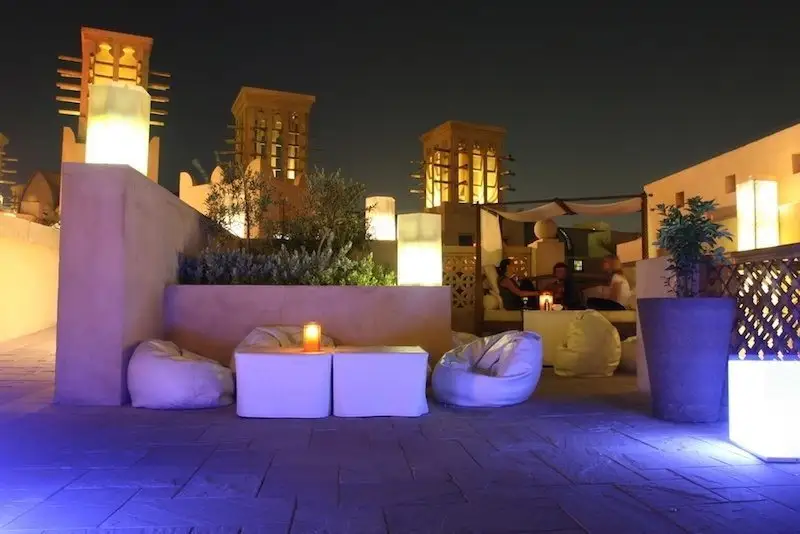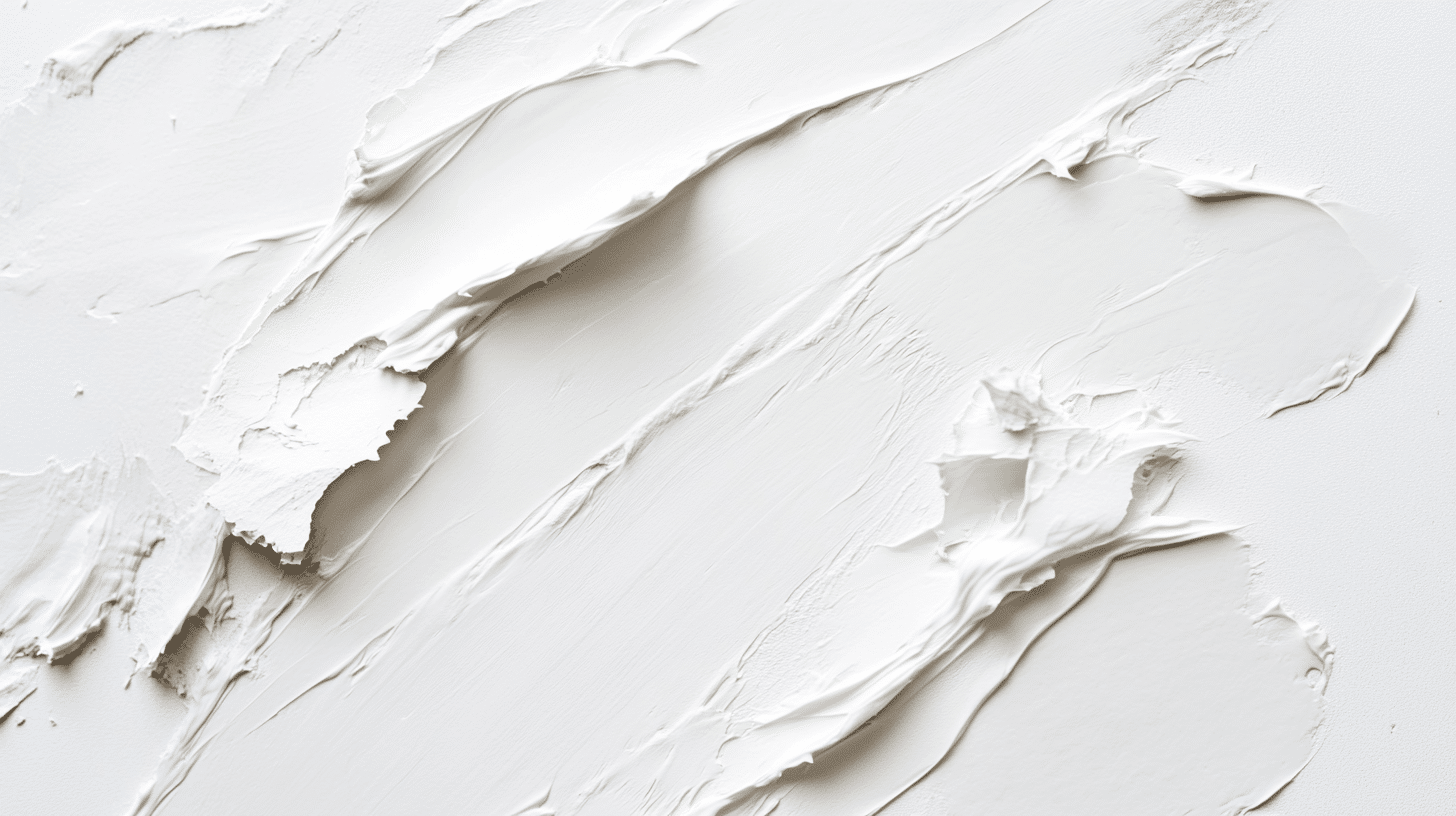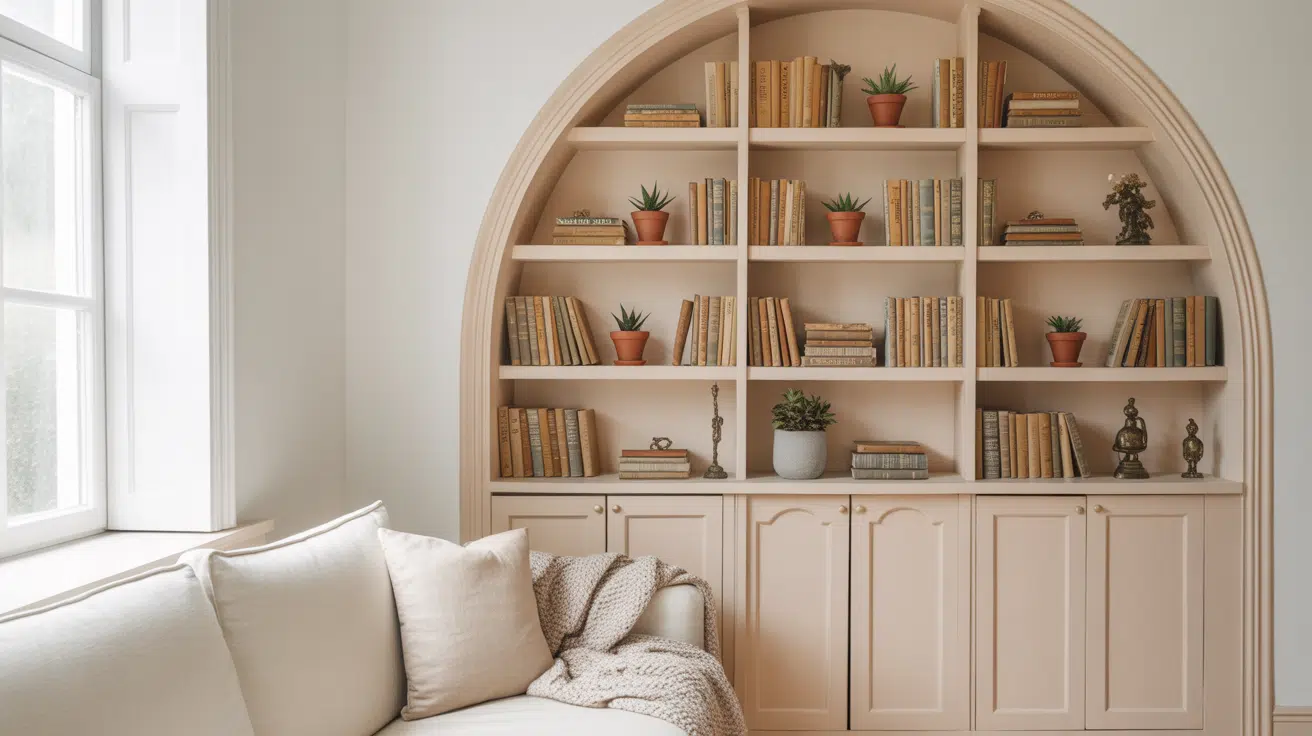Transform Your Space: DIY Modern Board and Batten Accent Wall Guide
I’ve seen how a simple board and batten accent wall can make any room stand out. Today, I’ll show you how to build one yourself.
A board and batten wall combines flat panels with thin wooden strips to create a clean, structured pattern that adds visual interest to any space.
While this design has roots in traditional homes, it’s now becoming a favorite choice in modern interiors for its simple yet striking look.
In this guide, I’ll walk you through each step of creating your own board and batten wall.
Whether you’re new to DIY projects or have some experience, you’ll find clear instructions and helpful tips to complete this project successfully.
Get ready to learn a skill that will help you create a stunning focal point in your home.
DIY Guide to Modern Board and Batten Accent Walls
Materials and Tools
| Tools / Materials | Purpose |
|---|---|
| Finish Nailer | To secure the battens to the wall |
| One 1/2″ Finish Nails | Nails used with the finish nailer |
| 1″ x 4″ Primed Boards | Boards used for the battens |
| Stud Finder | To locate the studs behind the sheetrock |
| Tape Measure | For accurate measurements |
| Caulk and Caulk Gun | For sealing gaps between battens and wall |
| Spackling | To fill nail holes |
| Sandpaper | To smooth the surface after filling holes |
Step 1 Measure, Plan, and Design the Layout
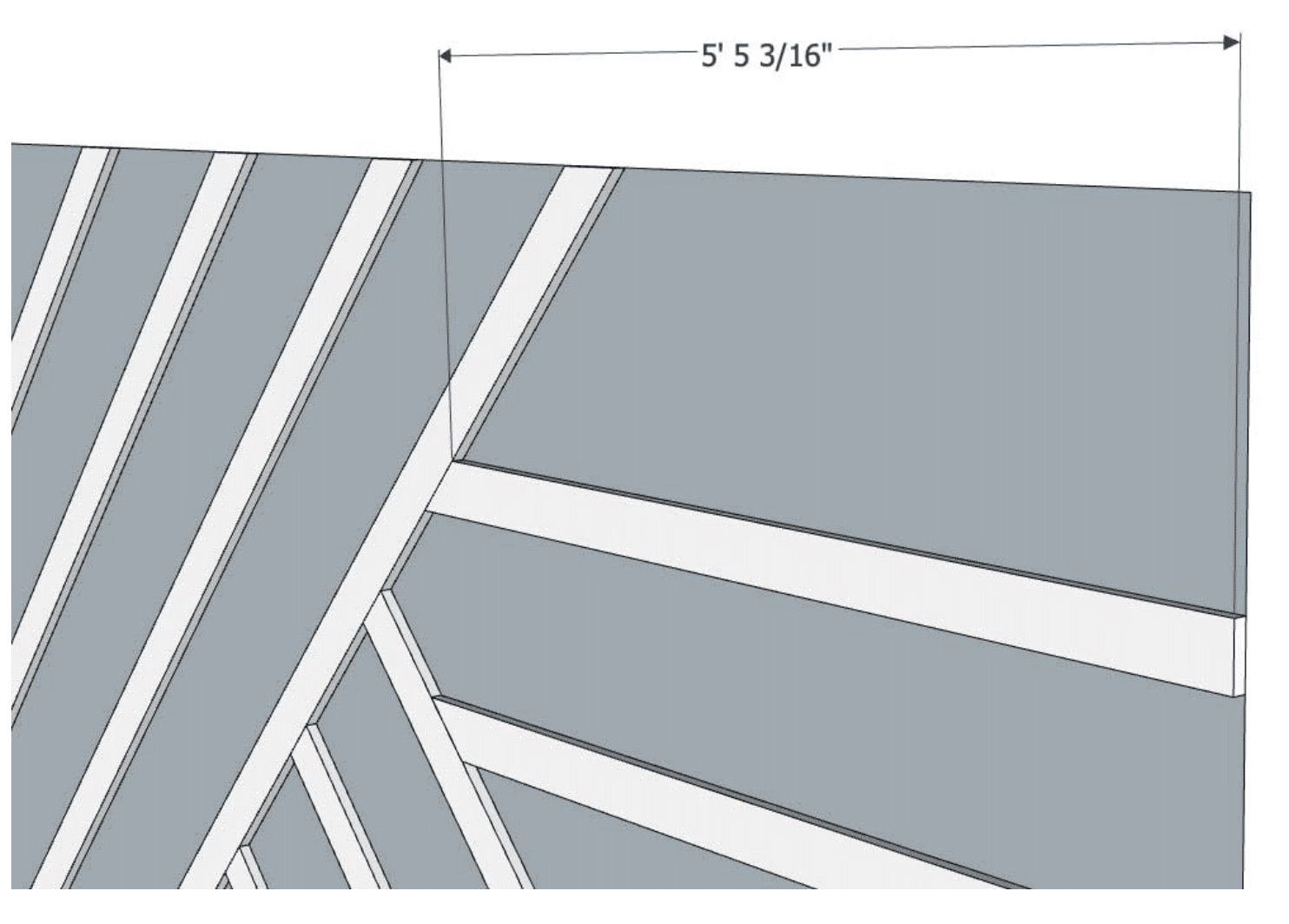
- Measure the width and height of the wall.
- Create a unique layout by turning the battens at a 45-degree angle.
- Use SketchUp or any other design tool to visualize and balance the spacing (12” apart in this case), making sure to avoid electrical outlets.
Step 2 Mark Studs and Cut the Battens
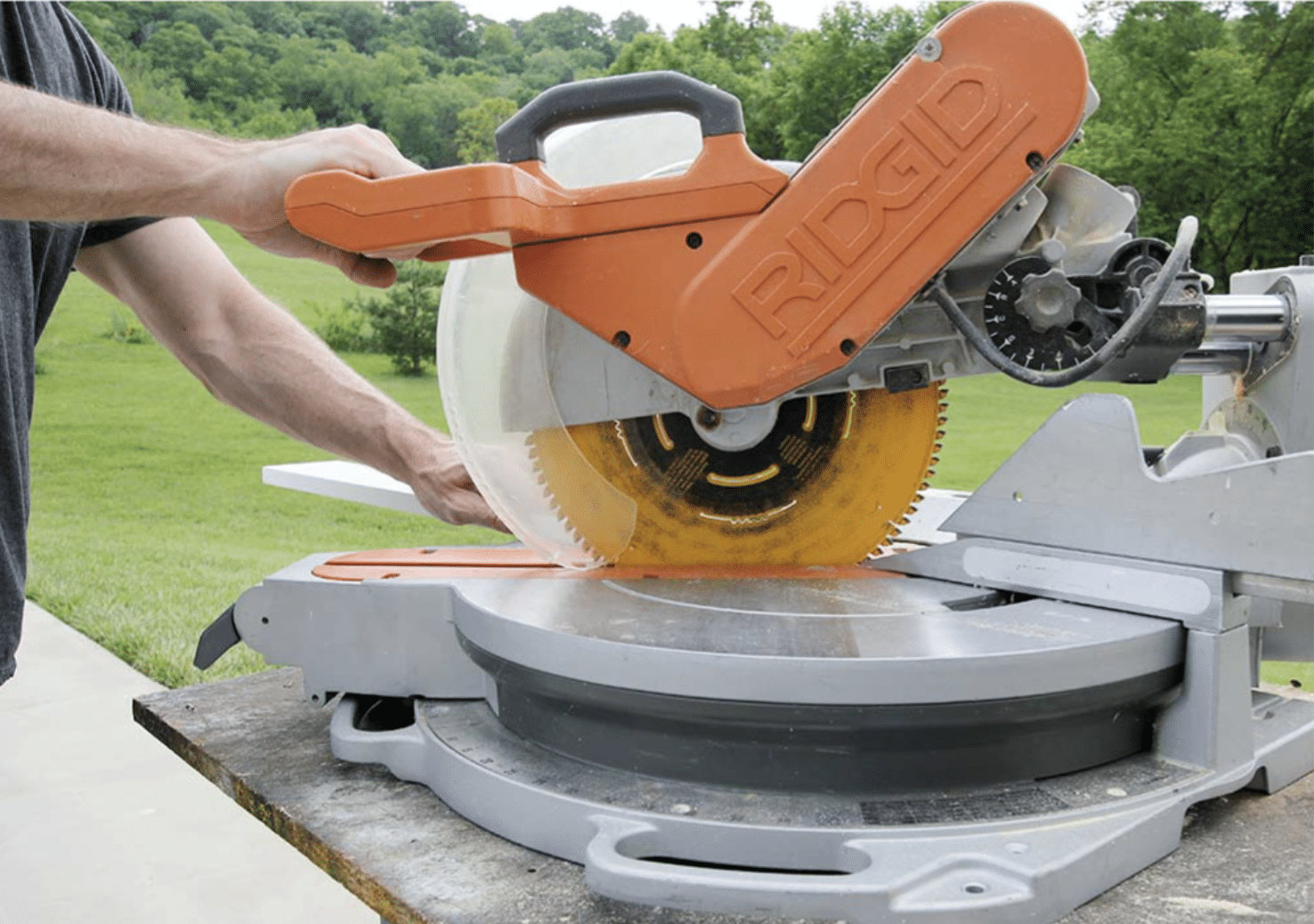
- Use a stud finder to locate and mark the studs on the wall for nailing battens.
- Measure and cut each 1″x4″ board to the required size using a miter saw set to 45 degrees, ensuring accurate cuts for the angled design.
Step 3 Install the Battens with Precision
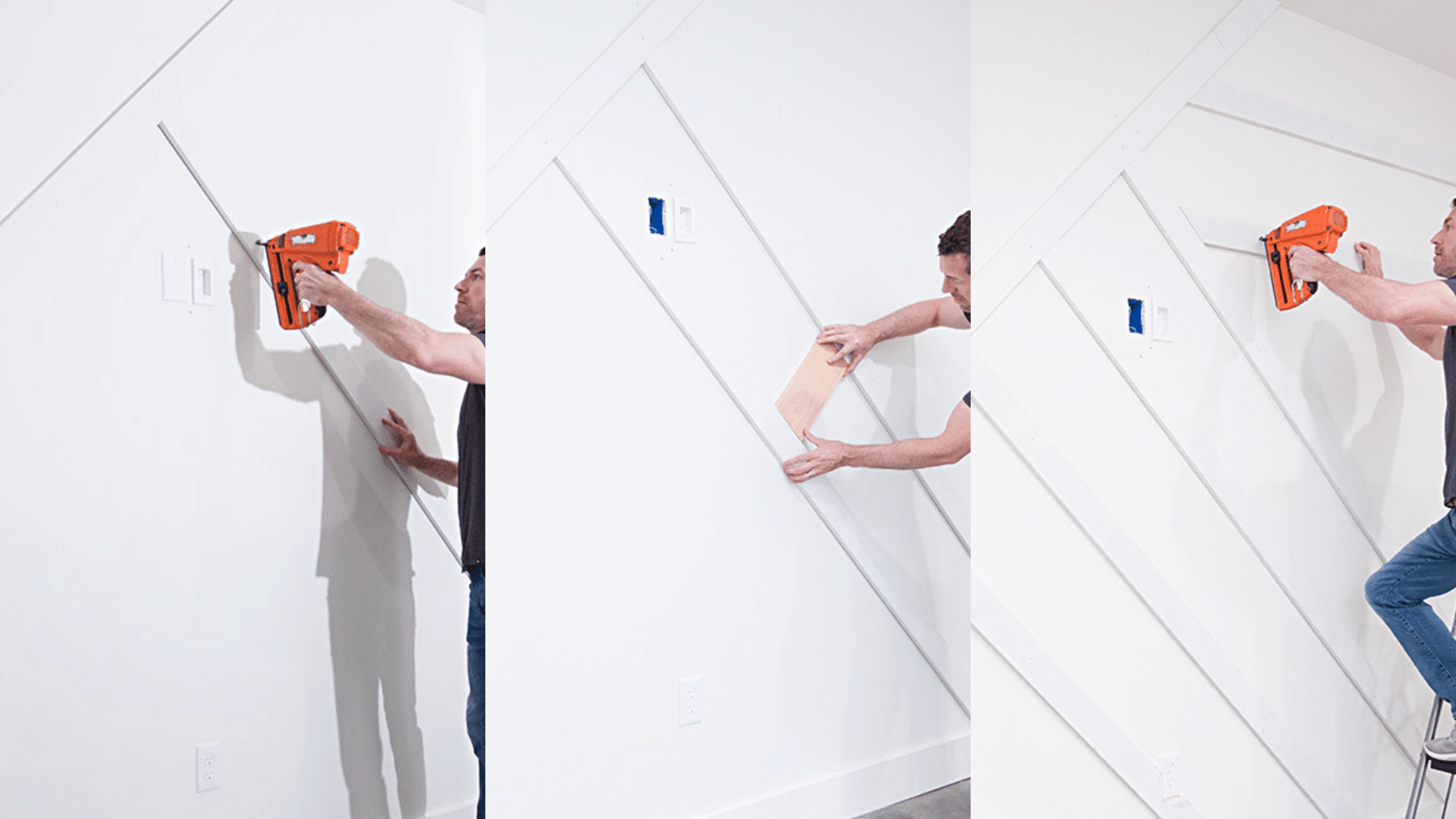
- Begin attaching the longest battens first, using 1 1/2″ finish nails.
- Use a 12″ spacer for consistent gaps between each batten.
- Continue nailing the battens to the wall, securing them into the marked studs.
Step 4 Fill and Sand for a Smooth Finish
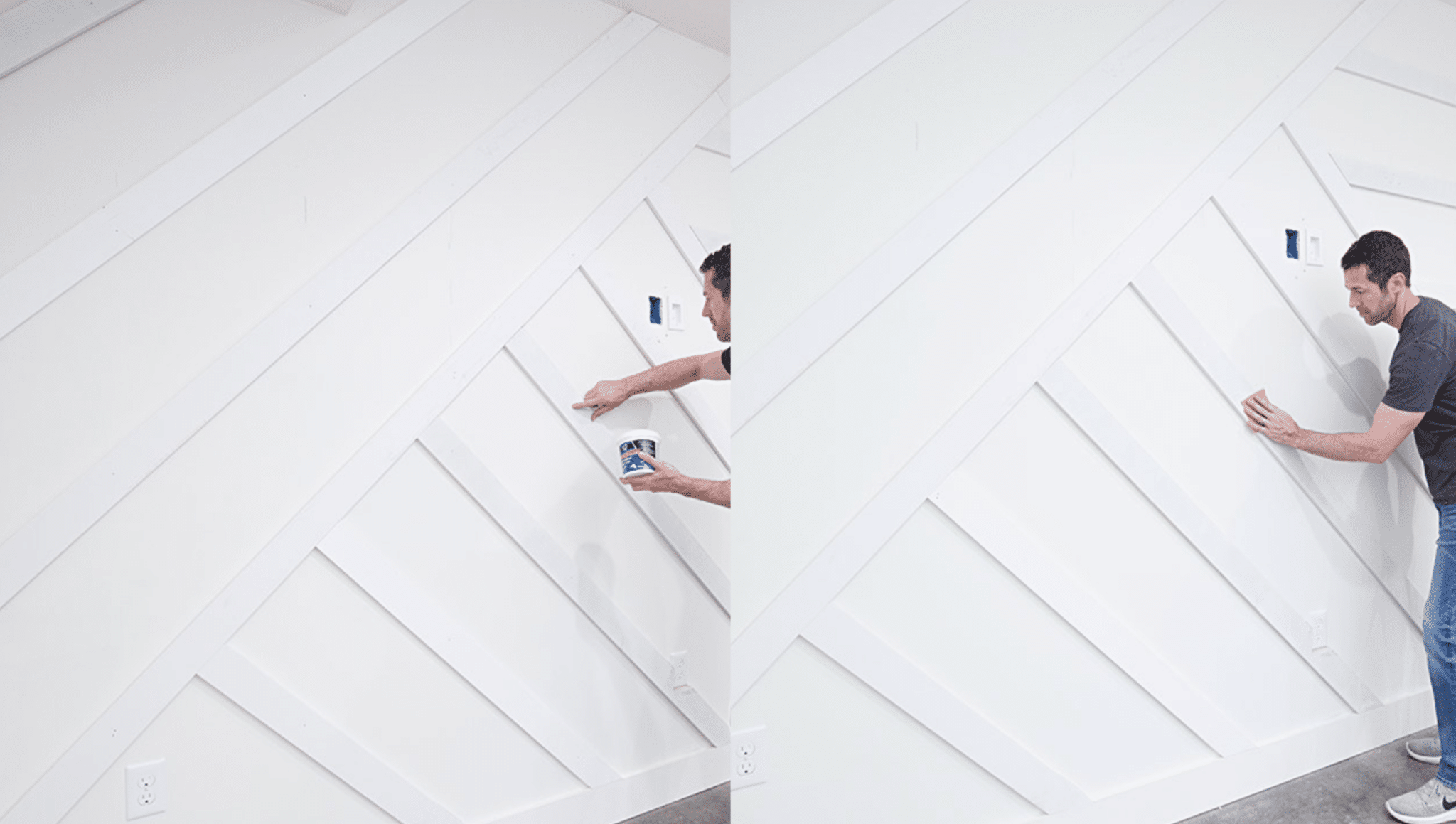
- Apply spackling to fill the nail holes, ensuring you leave a slight excess to prevent indentations.
- Once the spackling dries, sand the surface with fine sandpaper until smooth.
Step 5 Seal Gaps and Paint the Wall
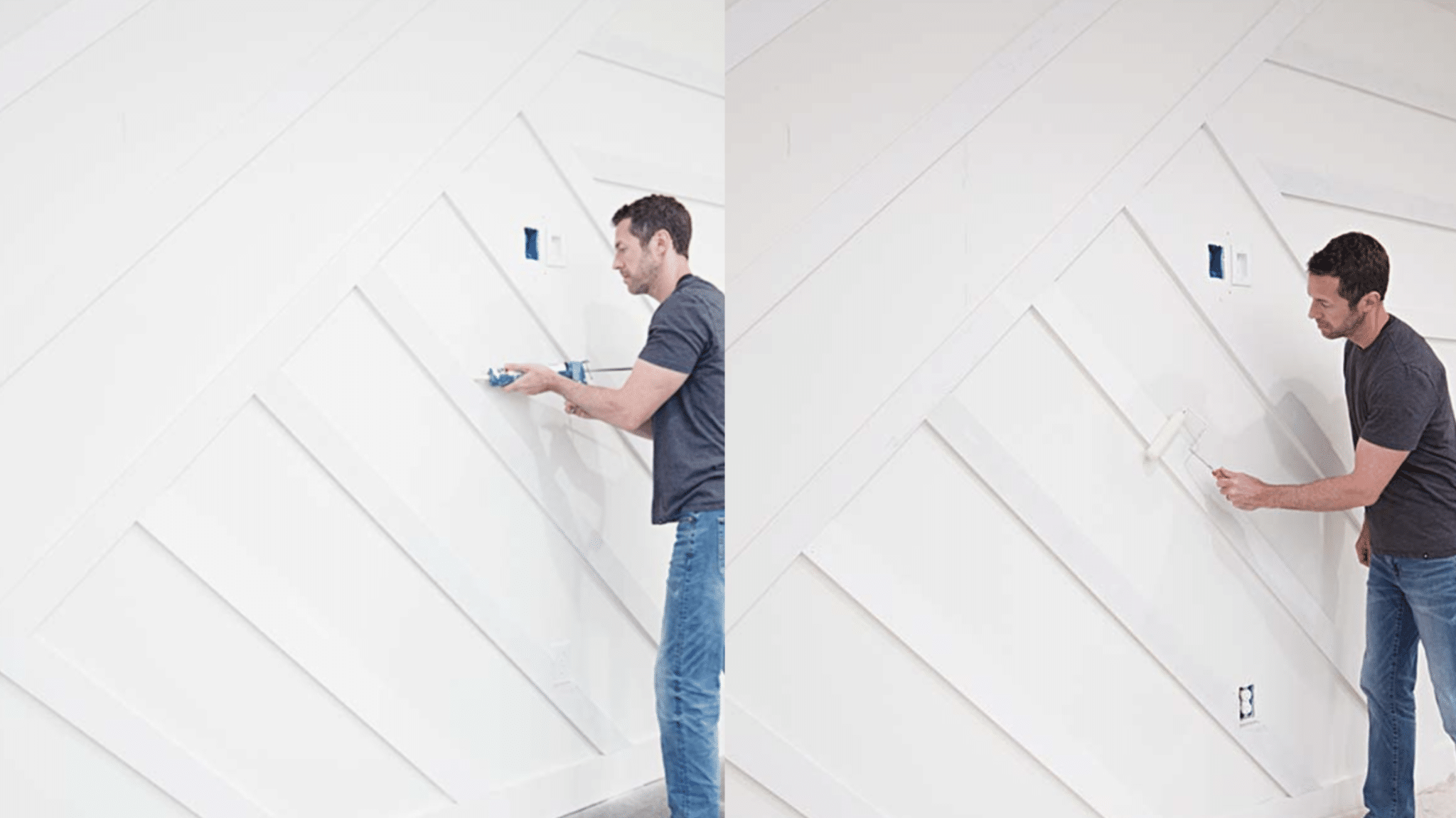
- Apply caulk along the edges of the battens to fill any gaps and create a seamless look.
- After the caulk dries, paint the wall using a foam roller for an even, smooth finish that matches the wall color.
Step 6 Final Touches and Finishing Details
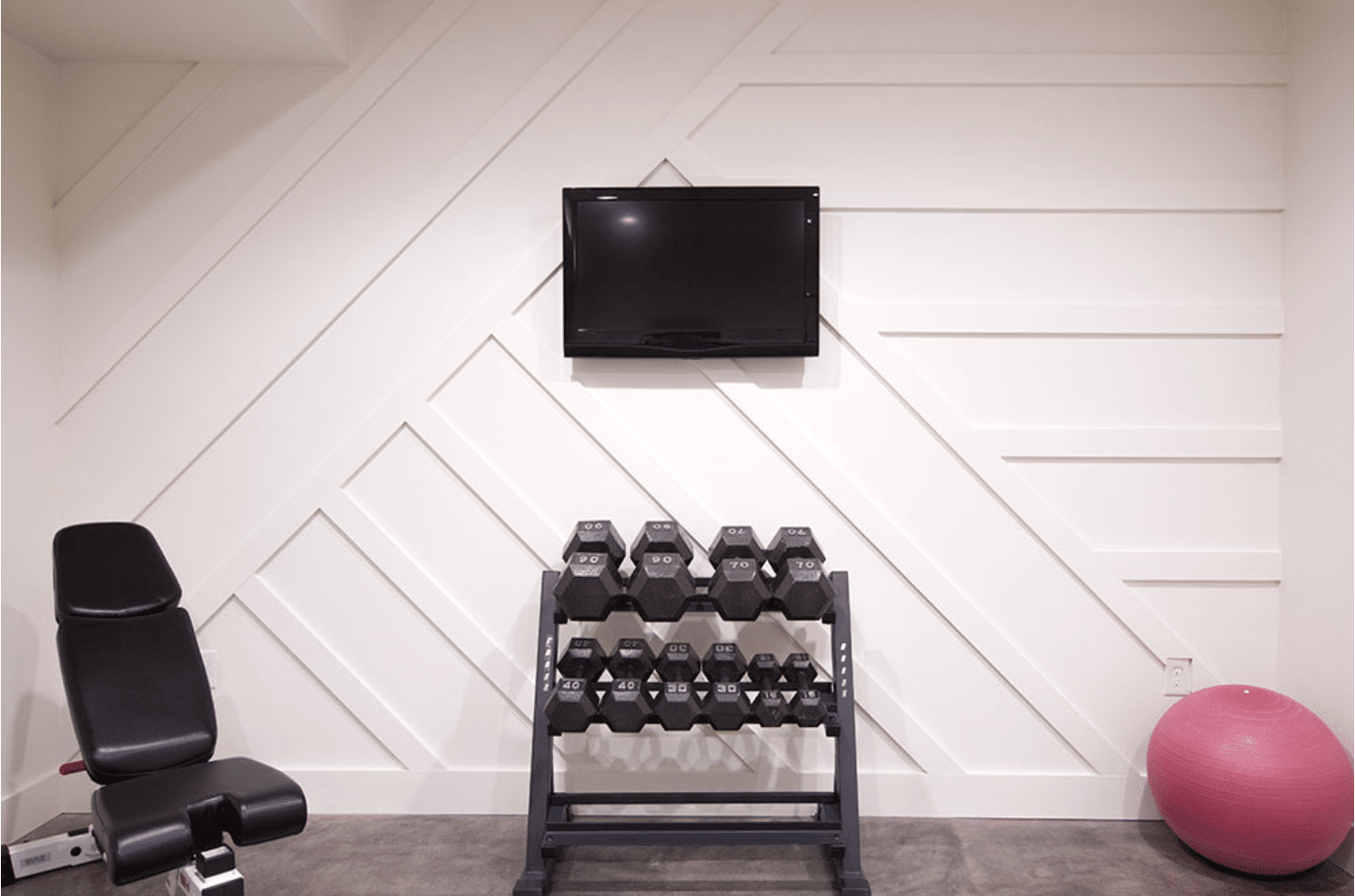
- Once the paint has dried, inspect the wall for any imperfections and touch up as needed.
- Clean up any excess paint or caulk, and reassemble the room with furniture and decor to complete the project.
Unique Board and Batten Accent Wall Styles
There are numerous ways to update the traditional board-and-batten design and add a fresh, contemporary twist.
Below are some creative ideas to help you achieve a modern accent wall that suits your space and style.
1. Bold Contrast with Dark Colors
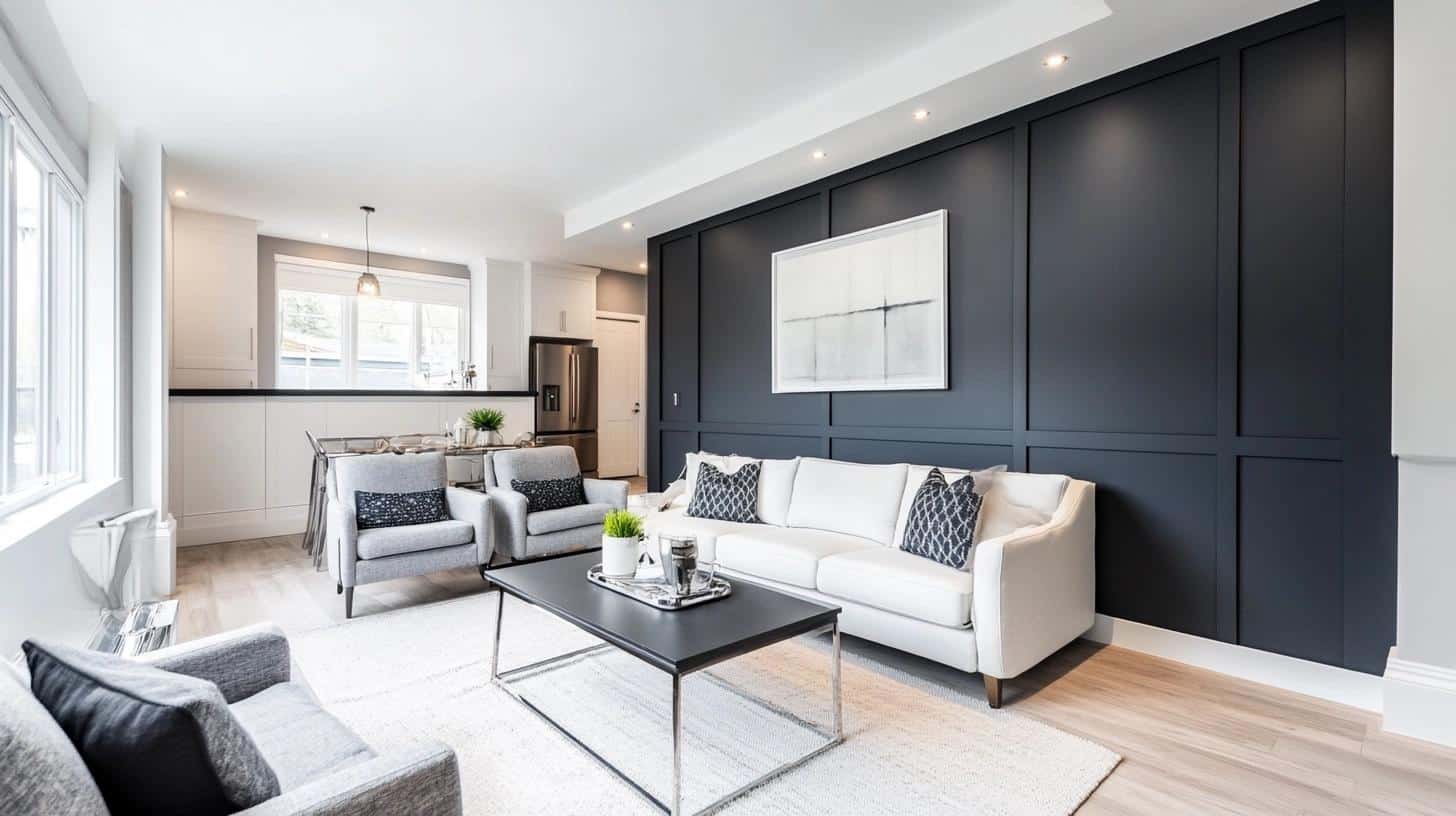
Adding deep shades to your wall creates a strong style statement. This effect works best in rooms with plenty of natural light, making it perfect for living spaces and home offices.
- Paint pick: Deep navy, charcoal, or black
- Add bright white decor to create contrast
- Mix in metal touches in silver or gold
2. Minimalist Vertical Battens
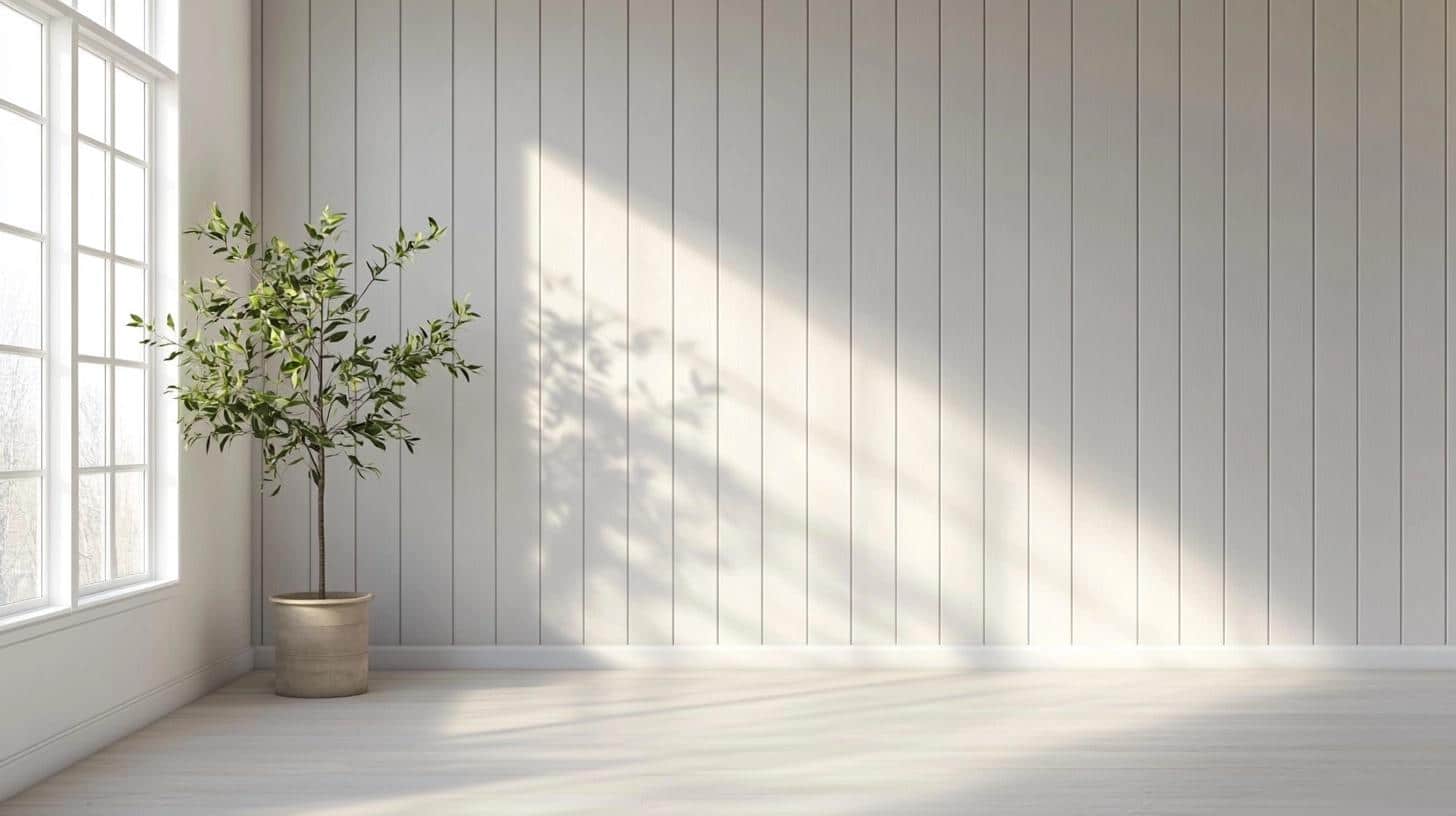
Thin up-and-down battens make your room feel bigger and more open. This clean look fits well in any modern home. The straight lines work especially well in small spaces where you want to create the feeling of higher ceilings.
- Use 1-2 inch wide strips
- Keep the gaps even between battens
- Paint in soft gray or white tones
3. Diagonal or Chevron Pattern
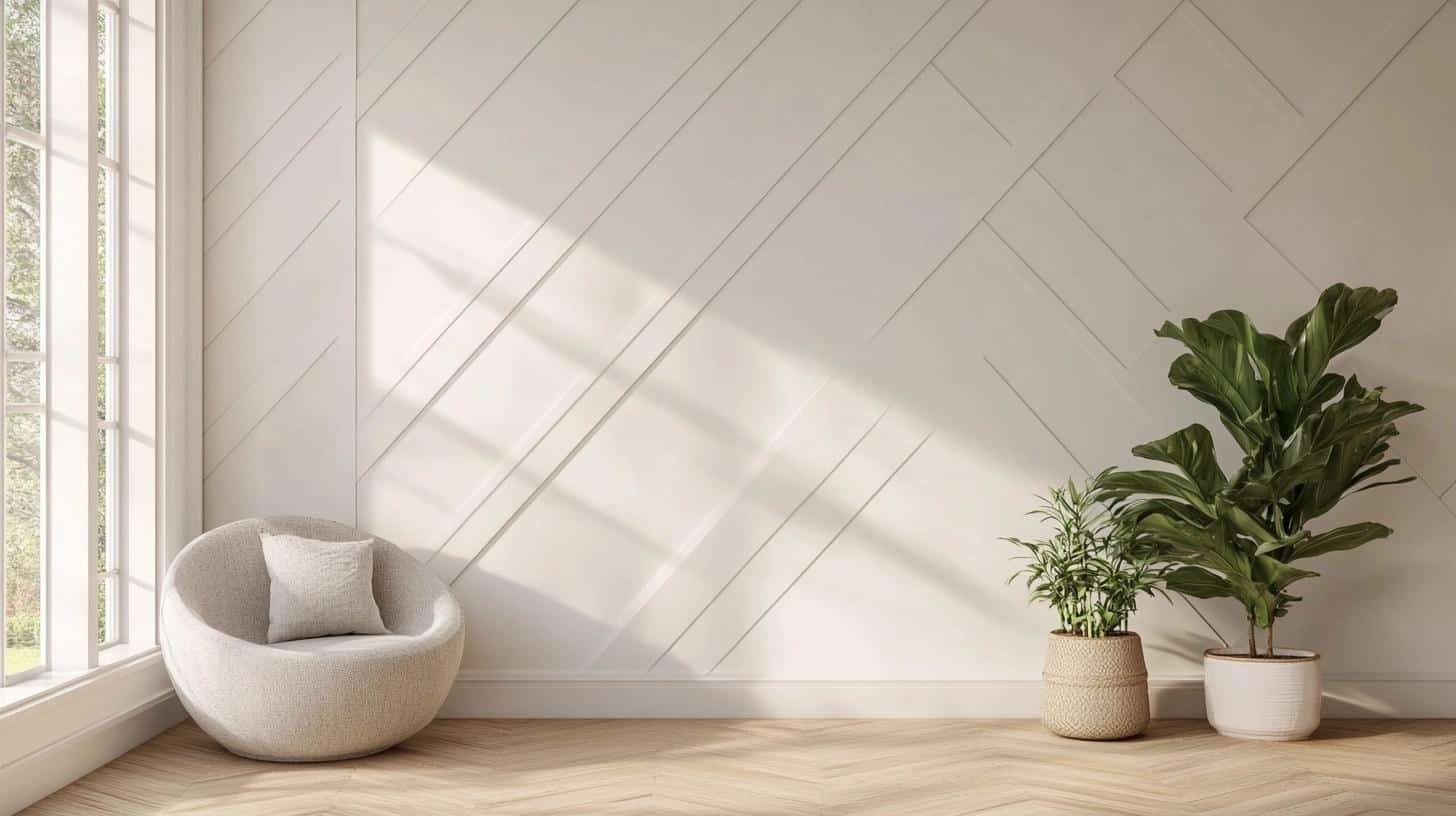
Slanted battens bring fresh energy to your wall design. Unlike standard straight patterns, angled designs create a unique focal point that catches attention as soon as you enter the room.
- Draw your plan before starting
- Use a level for exact angles
- Pick neutral colors to show off the pattern
4. Half Wall with Board and Batten
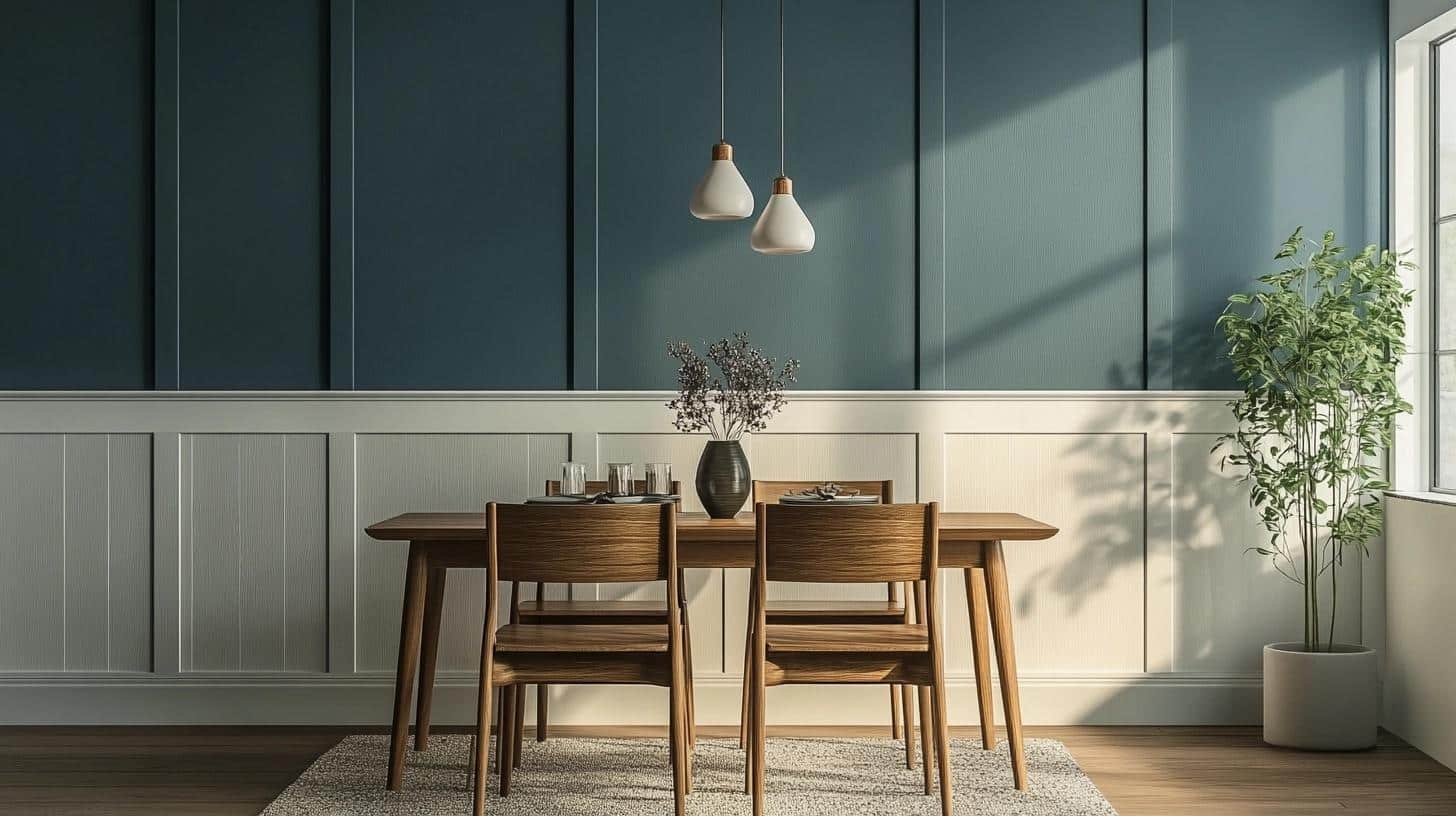
A mid-wall board and batten setup splits your wall into two distinct parts. This look works great in dining rooms and hallways, offering a perfect mix of style and function.
- Stop the pattern at the waist or chair-rail height
- Paint the top and bottom in matching or contrasting colors
5. Bold Geometric Shapes
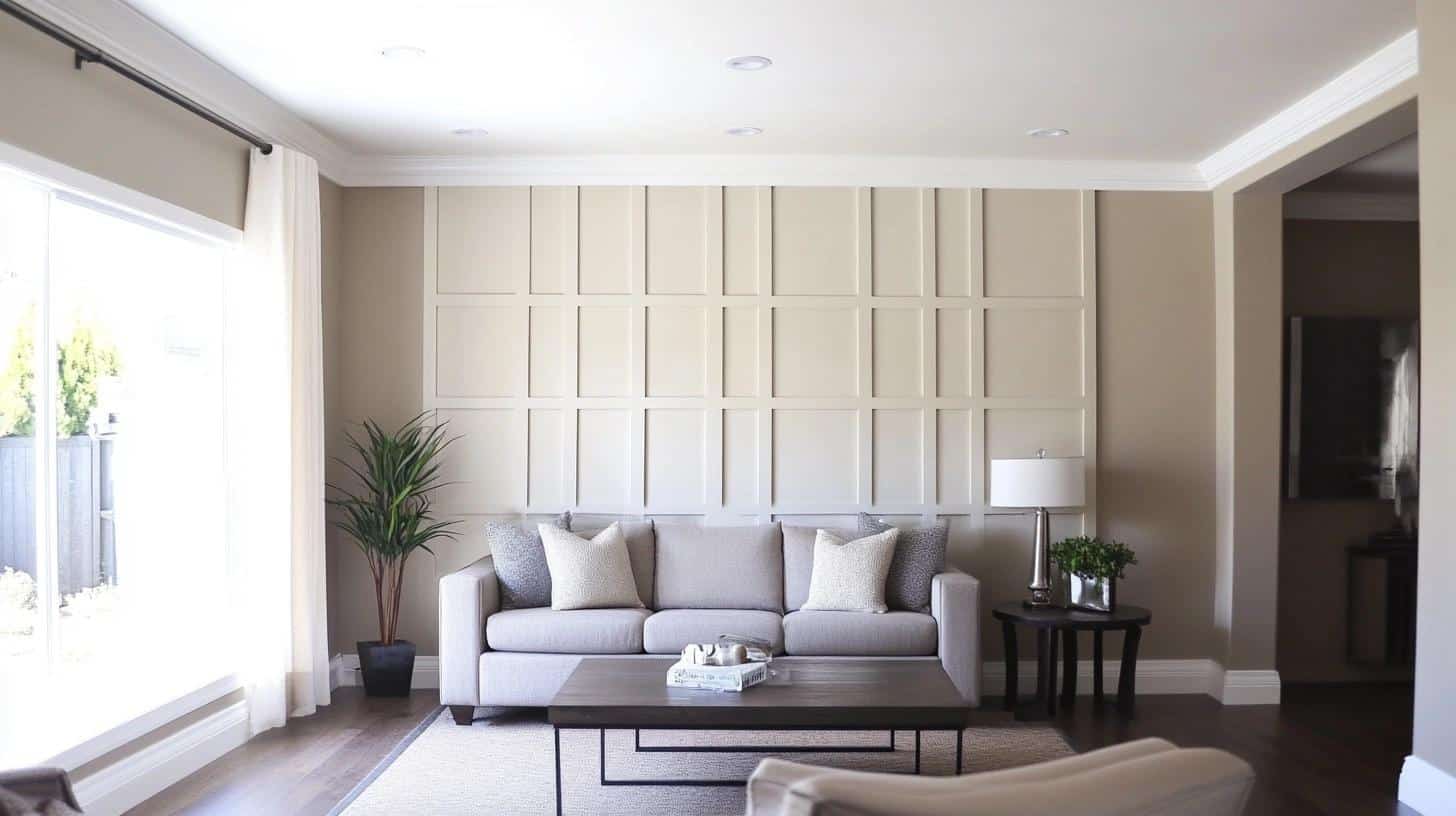
Creating patterns with battens lets you build custom wall designs. This approach turns your wall into a one-of-a-kind piece that reflects your personal style.
- Mix squares and rectangles for visual interest
- Keep shapes balanced and even
- Use a solid paint color to highlight the pattern
6. Wood Tones for Warmth
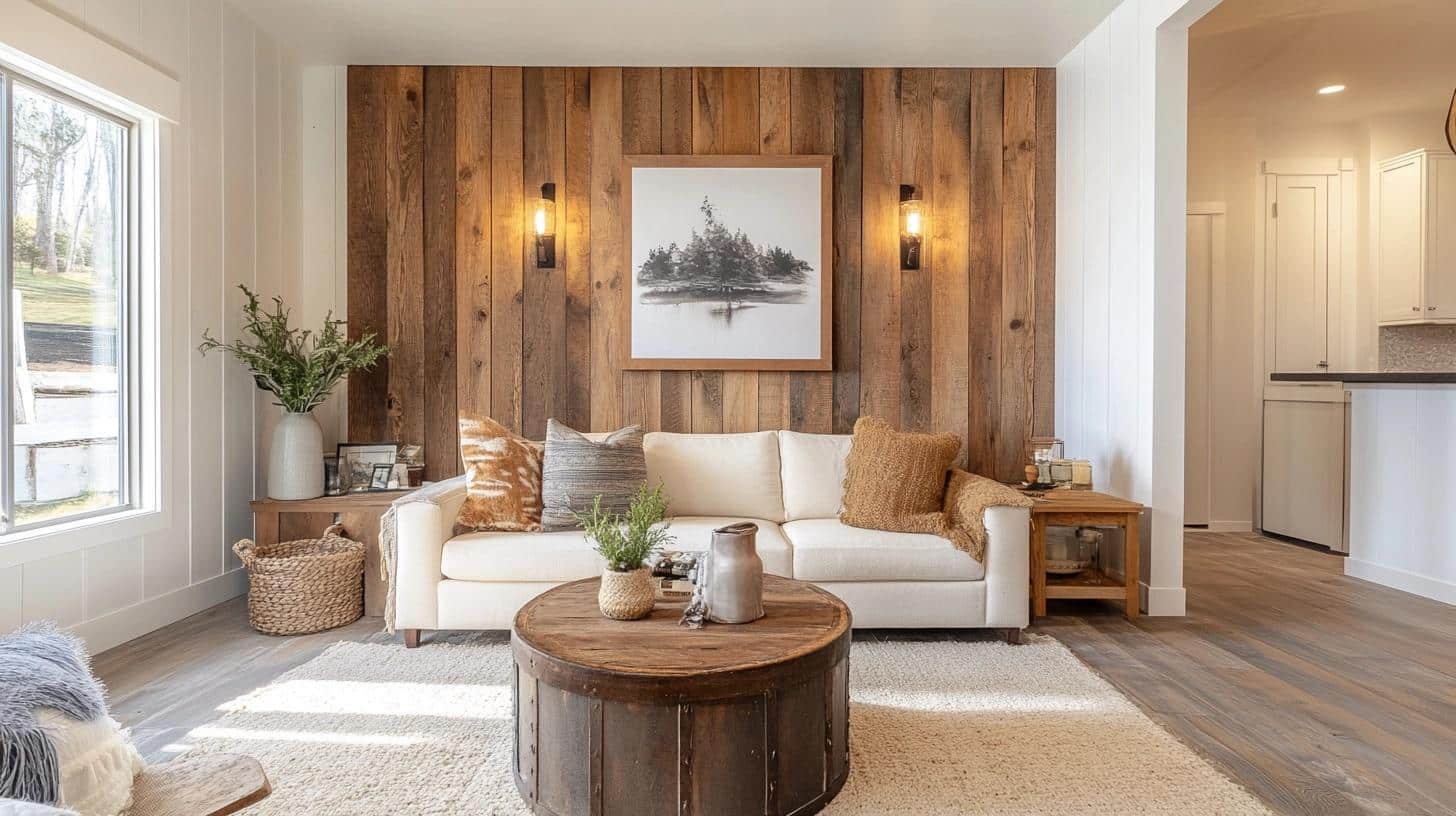
Using wood-toned battens adds natural beauty to your walls. This style brings the outdoors in and creates a cozy feel. The natural grain patterns offer extra visual texture that paint alone can’t match.
- Pick wood stains that match your furniture
- Mix light and medium wood tones
- Keep the base wall white for contrast
7. Horizontal Battens for a Unique Twist
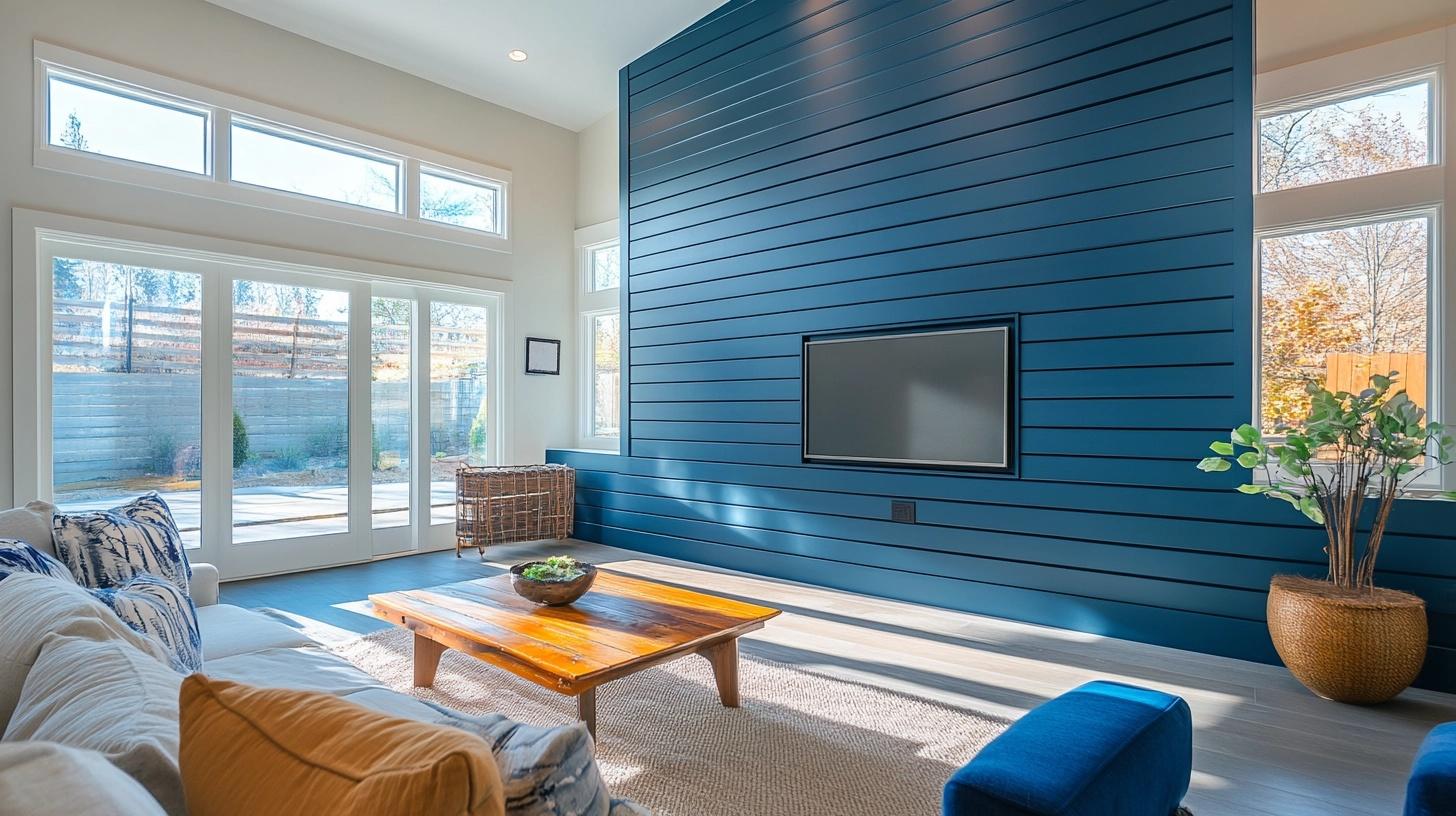
Running battens horizontally creates an unexpected twist on the classic look. This direction tricks the eye into seeing more width in your space. It’s an excellent choice for rooms that need to feel bigger.
- Place strips at even intervals
- Use wider battens for more impact
- Paint all pieces the same color for unity
8. Two-Tone Board and Batten
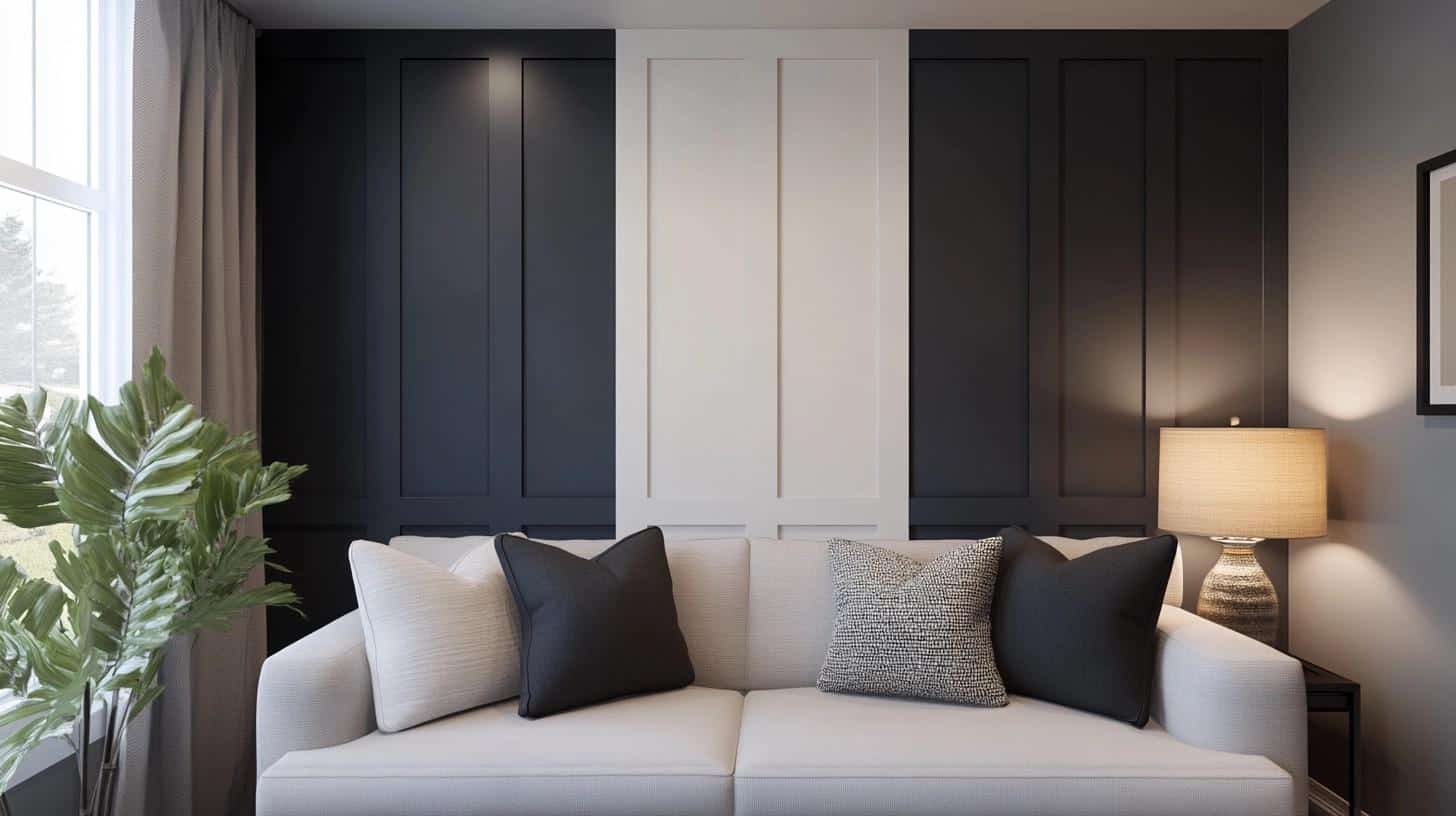
Using two different paint colors brings new life to the board and batten design. This method makes the wall pattern pop more than single-color options. The contrast between colors draws attention to the wall’s depth and layout, making it an excellent choice for modern spaces.
- Paint battens in a different shade than the background
- Try light and dark versions of the same color
Selecting the Right Materials for a Board and Batten Accent Wall
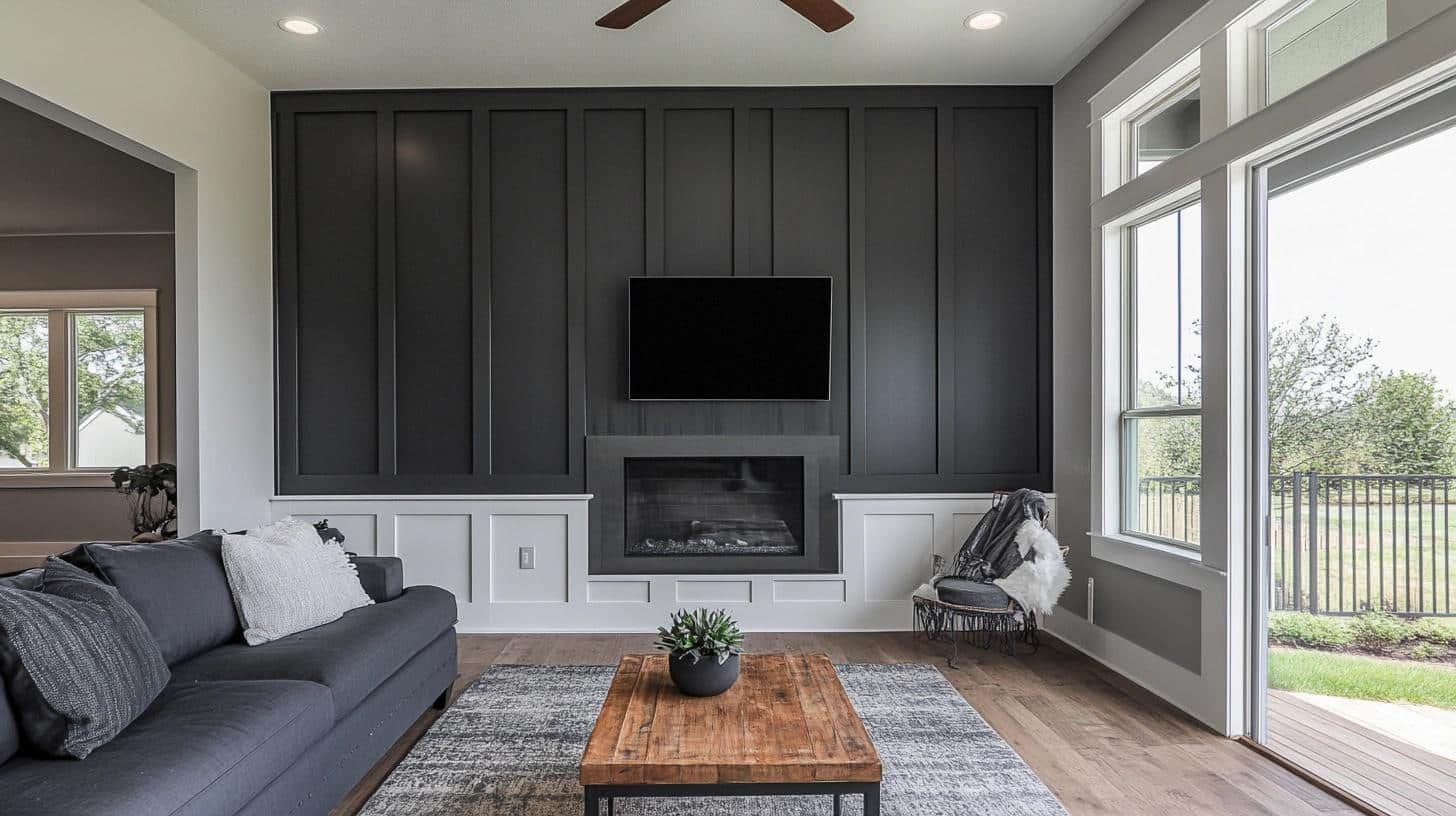
Choosing the right materials for your board and batten accent wall is crucial to achieving a polished and durable look. Here’s a guide to help you make the best choices:
Type of Wood or Boards
- Primed MDF: A cost-effective pick that’s simple to handle. MDF makes sense for indoor walls since it’s smooth and holds paint nicely. Keep in mind it doesn’t work well with water, so skip it in bathrooms or damp spots.
- Pine or Poplar: These real wood picks last long and stay strong. Pine won’t break your budget, and poplar gives you fewer knots with a cleaner look.
- Stained Wood: Want to see natural wood patterns? Oak or walnut work great with stains to show off their natural beauty.
Nail Type and Size
- Use 1 1/2″ finish nails with your finish nailer to attach everything firmly. You’ll like how the tiny holes fill easily and sand flat for a clean look.
Caulk and Spackling
- Pick paintable caulk to seal gaps where battens meet the wall. This step helps create that perfect, finished look.
- Get lightweight spackling for nail holes – it’s quick to use and turns smooth when you sand it.
Paint Type
- Choose high-quality interior paint for an even coat. For walls that need frequent cleaning, try satin or semi-gloss – they wipe clean easily.
Tools
- Your toolkit needs a finish nailer, miter saw, and level to ensure that everything is cut and placed straight.
- Use a foam roller to put on paint – it helps avoid streaks and gives you that smooth finish.
Simple Care Guide: Maintaining Your Board and Batten Wall
Let me share some straightforward tips to help you maintain your board and batten wall:
- Regular Dusting: Use a soft cloth or feather duster to clean the surfaces weekly. Pay extra attention to the corners and edges where dust tends to build up. The three-dimensional design can catch more dust than flat walls, so staying on top of regular cleaning helps maintain its crisp look.
- Surface Cleaning: For marks or smudges, use a slightly damp cloth with mild soap and water. Always dry the surface right away. Skip harsh cleaners—they might harm the paint or wood.
- Paint Touch-ups: Keep some extra paint handy for quick fixes. Small chips or marks can happen over time, especially in busy areas. Having your paint ready makes it easy to do quick touch-ups to keep everything looking fresh.
- Wood Care: Check the battens every few months to ensure they’re still firmly attached. If you notice any loose sections, immediately fix them with wood glue or nails. This helps prevent bigger problems later on.
- Temperature Changes: Wood can expand and contract with temperature changes. Watch for any gaps that might form between pieces during different seasons. Small gaps are normal, but larger ones might need attention.
Conclusion
I’ve shown you the steps, materials, and design options for creating your own board and batten wall. This project takes time and careful planning, but the results can change how your entire room feels.
Start with a simple design if you’re new to DIY projects.
Remember to measure twice, cut once, and take your time with each step.
The key to success is in the details – from picking the right materials to making clean cuts and applying smooth paint.
I’d love to see how your wall turns out! Share photos of your finished project in the comments below, or ask any questions you have about the process.
Your next beautiful room is just a weekend project away.
Frequently Asked Questions
Can I Install a Board and Batten Wall on Textured Surfaces?
Yes, but smooth the wall first. Sand down light texture or add a thin layer of drywall over heavy texture. This gives you a flat base for the boards.
What Paint Colors Work Best for A Modern Look?
White, soft gray, and black work well for a clean, modern style. Light colors make rooms feel bigger, while dark shades create bold statements.
How Much Time Will the Project Take for a Beginner?
A standard wall (10×10 feet) takes about 2-3 days. Day one is for prep and base layer, day two is for battens, and day three is for painting.
Is Board and Batten Suitable for All Rooms?
Yes, but use moisture-resistant materials in bathrooms and kitchens. It works great with standard materials in bedrooms, living rooms, and hallways.



